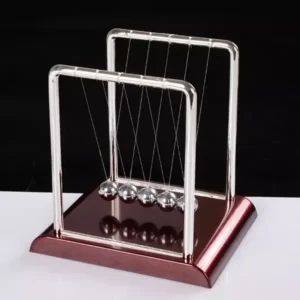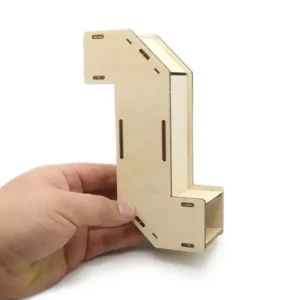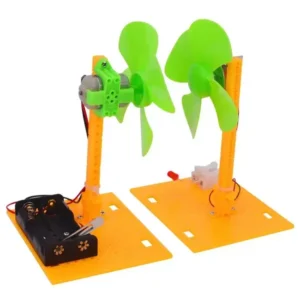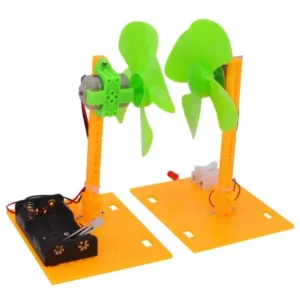View cart “Sport Robot – Energy transformation – Electric energy to kinetec energy conversion” has been added to your cart.
Wooden Hand Electricity Generator – Energy transformation – Kinetic energy to Electric energy conversion
29,00 AED
A Wooden Hand Electricity Generator is a device that converts manual kinetic energy, generated by turning a hand crank, into electrical energy through electromagnetic induction. It demonstrates the fundamental concept of transforming physical effort into usable electricity.

Product Details
Reviews
Product Details
Objective:
Demonstrate a model of a Wooden Hand Electricity Generator to showcase the conversion of kinetic energy from hand cranking into electric energy.
Materials included:
Wooden base
Electric motor or generator
Hand crank mechanism
Wires and connectors
Light bulb or small electronic device
Materials not included in the kit:
Procedure and assembly steps:
Procedure included in the kit manual . This is not a ready made product. Student needs to follow the steps to assemble the model…
Description:
Wooden Hand Electricity Generator – Energy Transformation:
A Wooden Hand Electricity Generator is a device that converts manual kinetic energy, generated by turning a hand crank, into electrical energy through electromagnetic induction. It demonstrates the fundamental concept of transforming physical effort into usable electricity.
- Hand Crank: A wooden hand electricity generator typically consists of a wooden handle or crank. When a child turns the crank by hand, they are applying kinetic energy to the system. This kinetic energy is in the form of rotational motion.
- Generator Mechanism: Inside the generator, there is a mechanical component called a generator or dynamo. The kinetic energy from turning the crank is transferred to this generator mechanism.
- Electromagnetic Induction: The generator mechanism usually contains coils of wire and magnets. As the crank turns, it causes the magnets to move relative to the coils of wire. This motion induces a flow of electrons in the wire due to electromagnetic induction. This process converts the kinetic energy from the hand crank into electrical energy.
- Electrical Output: The electrical energy generated by this process is typically used to power small LED lights, bulbs, or other low-power devices that are connected to the generator. This demonstrates the practical application of the generated electricity.
Learning outcome:
Have a better understanding of a Wooden Hand Electricity Generator to showcase the conversion of kinetic energy from hand cranking into electric energy using the model built by the student in this project
Section or subject:
Physics
Grades:
8+
Reviews
Be the first to review “Wooden Hand Electricity Generator – Energy transformation – Kinetic energy to Electric energy conversion” Cancel reply
















Reviews
There are no reviews yet.